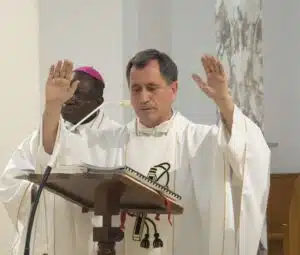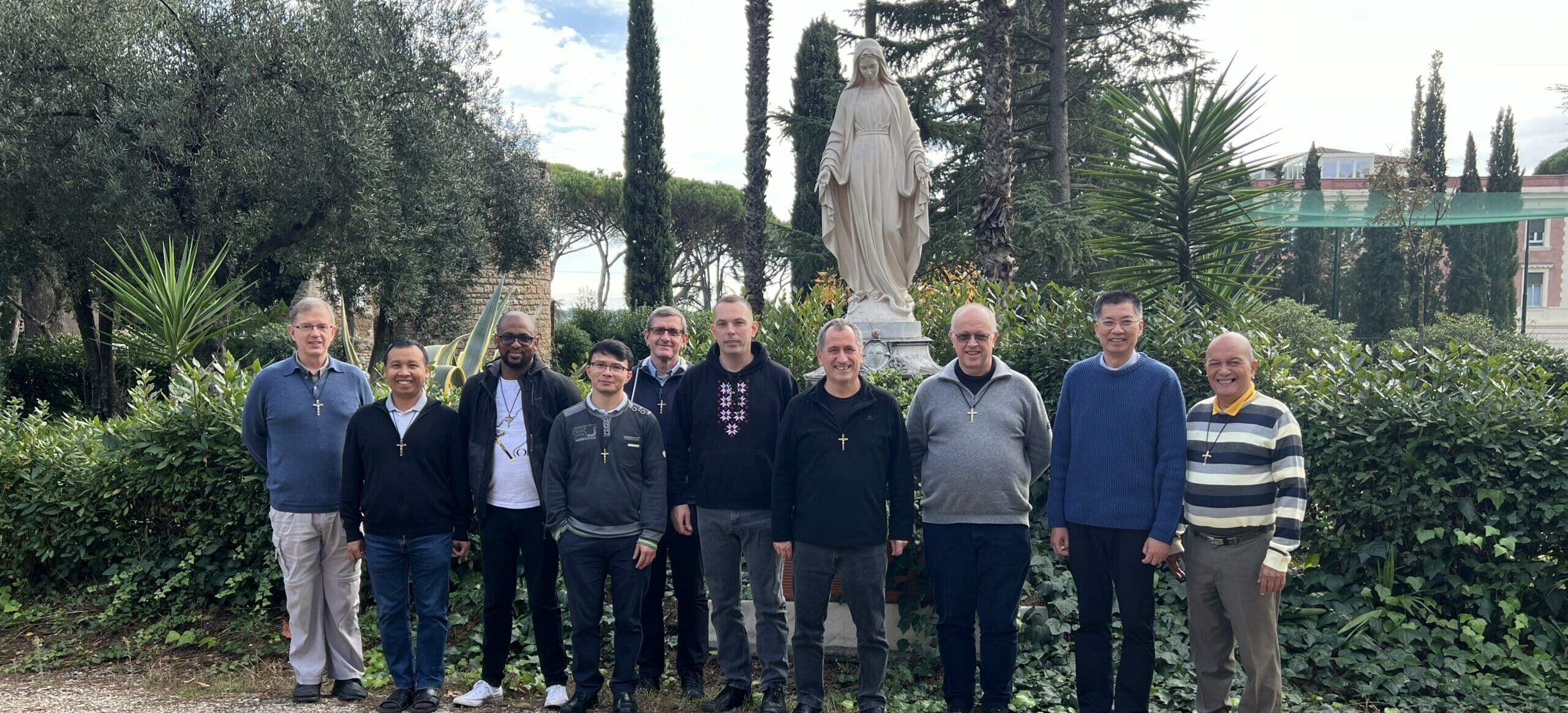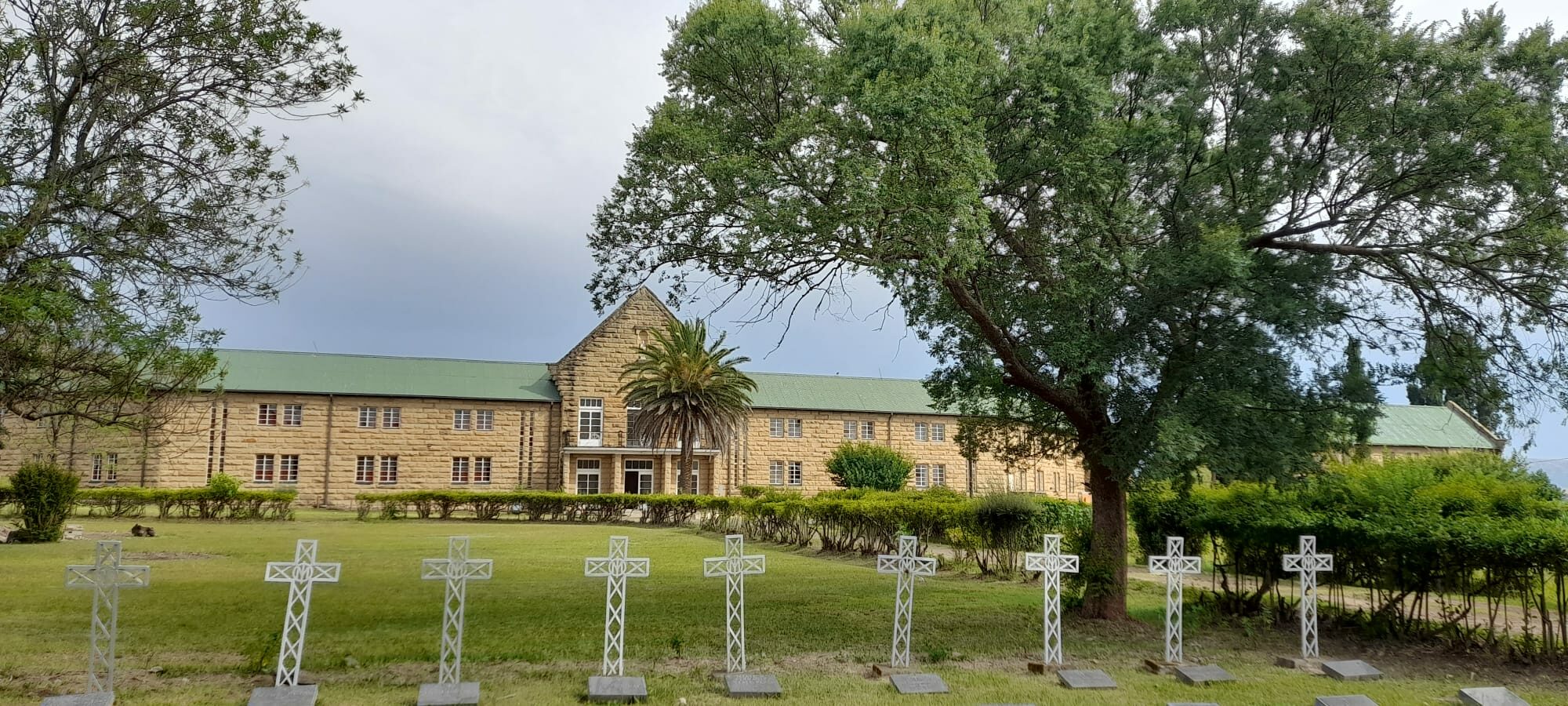Roma, Lesotho, December 8, 2023

Luis Ignacio ROIS ALONSO, OMI Superior General
LJC et MI
With Mary on the synodal path
Dear Oblates and members of our charismatic family
Once again this year, we gather around our Mother on the Solemnity of her Immaculate Conception. I thank God, Mary and all of you for your prayerful company during this year in which all members of the central government have made a pilgrimage, visiting many of the places where we are serving the poorest and trying to live the Good News of the Gospel with them. We can confirm what Father Vincens, OMI, (Secretary General) said in a letter addressed to Fr. Arnaux on February 15, 1860: “Evangelizare pauperibus misit me. We are made for the poor; the heart feels at ease among them; we have a special grace for doing them some good.” It does us much good to serve the poor. It does us much good to be missionaries with them. It does us much good to hear the Gospel from them in a new way (R.8a). It does us much good when we make our communities a home for the poor, and the houses of the poor a home for Jesus, thus bearing witness to his Kingdom.
In these days I have meditated on the discreet presence of Mary in the Acts of the Apostles. Luke’s silence about Mary’s presence during the Passion of Jesus and the appearances of the Risen Lord is striking. In the Acts of the Apostles, Mary appears again when the community is gathered in prayer and hope. Mary, the Mother of Jesus, is also the Mother of the new community on whom the Spirit will shower gifts on the day of Pentecost. This mystery seems to be desired by Jesus himself from the cross in the Gospel of John (Jn 19:26). Pope Francis says: “With the Holy Spirit, Mary is always present in the midst of the people. She joined the disciples in praying for the coming of the Holy Spirit (Acts 1:14) and thus made possible the missionary outburst which took place at Pentecost. She is the Mother of the Church which evangelizes, and without her we could never truly understand the spirit of the new evangelization.” (EG 284). And also, “At the foot of the cross, at the supreme hour of the new creation, Christ led us to Mary. He brought us to her because he did not want us to journey without a mother, and our people read in this maternal image all the mysteries of the Gospel. The Lord did not want to leave the Church without this icon of womanhood. Mary, who brought him into the world with great faith, also accompanies ‘the rest of her offspring, those who keep the commandments of God and bear testimony to Jesus’” (Rev 12:17). (EG. 285)
This maternal presence of Mary, this feminine icon that the Lord wants for his Church, has been manifested throughout the synodal process and in the Assembly that was held in Rome last October. In the proposed assembly dynamic, mutual listening and listening to the Spirit are harmonized to discover what God is asking of us so as to collaborate in his mission. This dynamic in itself is good news for the Church and for society that is on pilgrimage in this world that seems to have lost hope.
This synodal process is what we have proposed and we propose once again for our family. We need to open ourselves to the Spirit to be faithful to our charism and our mission. We need to listen to each other and listen together to the Word of God and the cries of today’s poor to understand what the Spirit is whispering to us. In our tradition we speak of “adopting a mode of discernment that favors consensus” (R. 26a). Using the dynamic followed in the Synod can help us fulfill our Founder’s dream of being “one heart and one soul”, reproducing that missionary communion of the first apostolic communities. “By growing in unity of heart and mind, we bear witness before the world that Jesus lives in our midst and unites us in order to send us out to proclaim God’s reign.” (C. 37)
Social networks have presented an image of the Synod that I find extremely suggestive: round tables where men and women, clerics and lay people dialogue and pray in a spiritual conversation. I dream that we too can do that in order to discern how to revitalize our life and mission from a creative fidelity to our charism (cf. C.168). I think that Mary has prepared those “round tables” in which the number of participants is gradually expanding. The Oblates can do it in each local community and later expand the spiritual conversation to different levels according to the decisions that need to be made. We must also expand the spaces where the laity and other realities and institutes that participate in the common charism will sit. Later, each one from his/her specific vocation will be able to put into practice what we are discovering. There is room for everyone at Mary’s table.
In the letters that I have addressed to you this year to try to launch the animation processes of our last General Chapter, I have proposed this same dynamic to take care of our common home with two tracks: the care of our planet from a comprehensive ecological conversion and the care of our charismatic family by strengthening local communities. Furthermore, with all the members of the central government and the CCRR Committee, we have dared to dream of a synodal process that would lead us to face the global restructuring of our structures and formation houses proposed by the General Chapter (cf. PCH: J. Initial Formation; K. Restructuring). The CCRR will guide us in following together an evangelical path in the footsteps of our Founder. We dreamed up this same process to seek actions that respond to what was requested in the same Chapter for the laity and lay associations that participate in the common charism (cf. PCH: H. Lay Associations) and for the other proposals of the Chapter. I have received with joy news of people and groups who have set out and who are responding with concrete proposals. Surely many others will join in this common pilgrimage. Thank you so much.
I cannot help but think about the mark of missionary holiness left by our Blessed Joseph Gerard now that I am venerating him at his tomb while on a pilgrimage through the holy land of Lesotho. He was a true missionary pilgrim who spread hope and lived communion. Always faithful to the service of the poorest and sick, to the proclamation of the Gospel and to the love of the Congregation, he did not hesitate to wear out and risk his life for the good of those to whom he had been sent. His love for God, his devotion to the Sacred Heart, his daring to try everything to announce the Gospel make us recognize in him a model of evangelical and missionary life, a model of an Oblate who allowed himself to be guided by the proposal of Saint Eugene in the “Preface” and in our Rules. When we ask ourselves how to be better missionaries today, he answers: “The answer is on every page of the Gospel: we must love them, love them in spite of everything, love them always. The good God has wanted that we do good to a person in loving that person. The world belongs to the person who loves it most and proves it.” (From the second reading of the Office of Readings of the Memory of Blessed Joseph Gerard. Notes from the retreat in the summer of 1886). The Oblates and the Church of Lesotho are the custodians of this treasure and I thank them and encourage everyone to further promote this legacy of missionary holiness of our religious family.
Joseph Gerard was a devoted lover of Mary Immaculate and knew how to promote her devotion. With him and with all our saints, the blessed and the entire community that lives in heaven, we want to wish each other a happy feast of our Mother and Patroness, asking for her intercession so that God blesses each and every one of us, as well as all those to whom we have been sent.
With affection, your brother pilgrim of hope in communion.
Luis Ignacio ROIS ALONSO, OMI
Superior General



